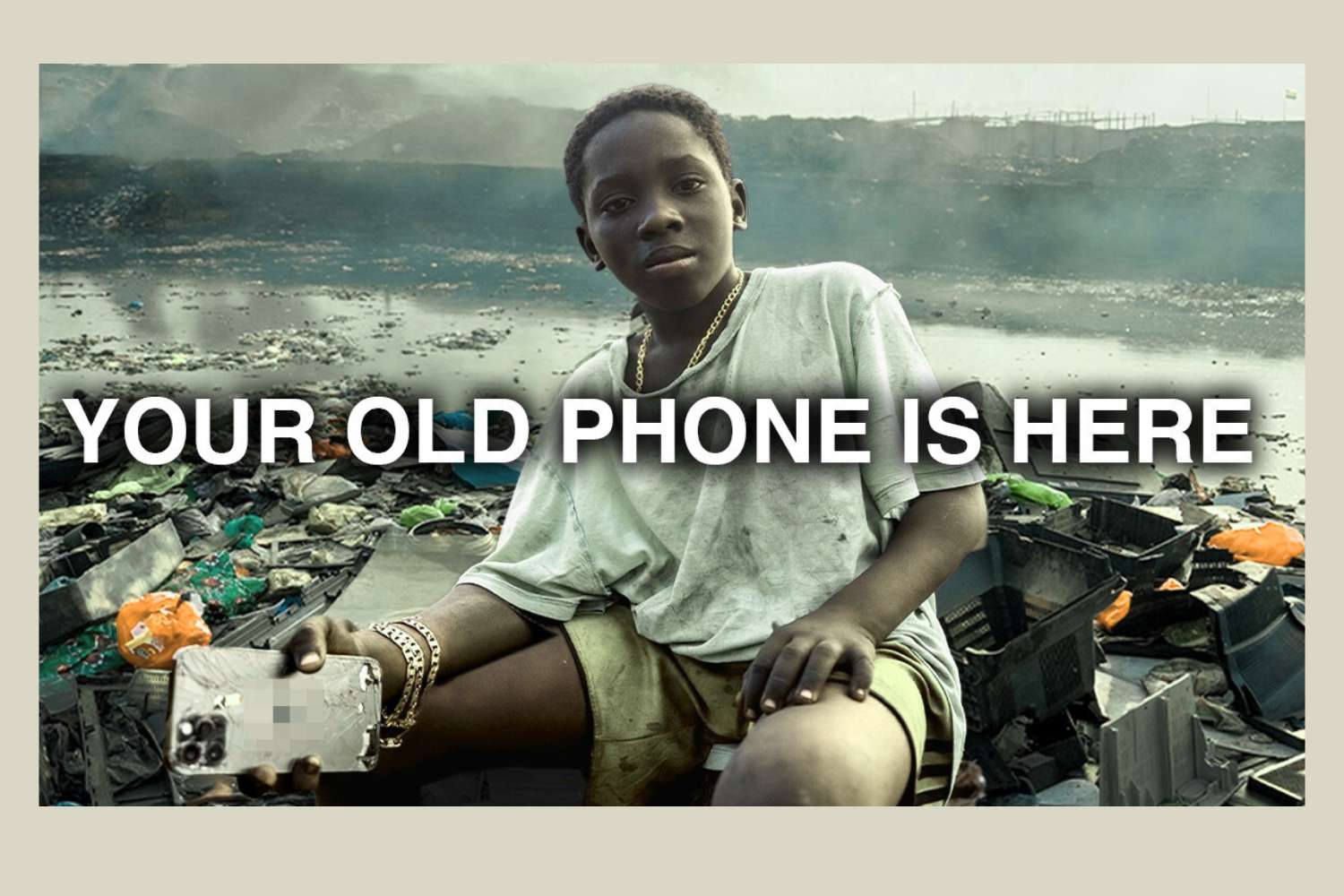The article explores the global issue of e-waste, focusing on Agbogbloshie in Ghana, where discarded electronics from wealthy countries exploit children for survival, shedding light on the human and environmental costs.

@ActionAid-Project Happiness
What happens to our phones when we change them? Where do the computers, TVs, and home appliances we stop using go? We rarely think about it, too busy chasing the latest model or the trend of the moment. Yet, what we consider “e-waste” becomes the only means of survival for thousands of children on the other side of the world.
To answer these questions, a new report by ActionAid and Progetto Happiness, authored by Giuseppe Bertuccio D’Angelo, takes us to the dark heart of global consumption: Agbogbloshie, in Ghana, the largest electronic waste dump on the planet. A place that seems to be born from the mind of an apocalyptic director. But it’s real. And it’s painful.
Where the west dumps its conscience
In Agbogbloshie, Ghana, tons of electronic waste arrive every week. They come from Europe, the United States, and even from our own living rooms. The devices we’ve used, broken, or simply discarded are “exported” under the hypocritical label of “second-hand material” and end up in hellish heaps where melted plastic mixes with metal, toxic smoke mingles with the air we breathe. And the ones who pay the highest price are primarily children.
In the report, a young boy recounts: “I burn the cables to find copper. The smell is strong, but I have to do it, otherwise we don’t eat.” Another admits: “I wish I could go to school, but my father is sick. If I don’t work, we can’t live.”
These are raw, unembellished testimonies. Pure reality. Children aged 8, 10, 12 who spend their days smashing televisions, inhaling toxic substances, handling circuits contaminated with lead and mercury. All for a few cents in their pocket, enough to buy a meal or a bottle of water. No future, no protection. Just survival.
The dirty face of “waste colonialism”
This phenomenon has a specific name: waste colonialism. It refers to the practice – whether legalized or tolerated – by which wealthier countries offload their waste onto the poorest regions of the world. According to the World Health Organization, 73 million children around the world work under hazardous conditions. Of these, over 18 million are involved in the informal recycling of waste. These aren’t just numbers: they represent lost childhoods, lives sacrificed to sustain our comfort.
“Our way of life, what we consume and discard, has a price we don’t see, but others – too often children – pay for it every day,” says Bertuccio D’Angelo. And he is right. Our idea of progress is also built on this comfortable silence: the one that allows us to change our phones every two years without thinking about the human and environmental cost of that action.
We can’t ignore it anymore
Today, June 12th, on the World Day Against Child Labour, words are not enough. We need to face the truth, even when it hurts. We need to remember that each European citizen generates, on average, 1,130 pounds (513 kg) of waste per year. Most of it ends up in landfills like Agbogbloshie.
And most importantly, we need to take action: demand transparency from electronics producers, support those who expose and fight child exploitation, and educate consumers to make informed choices. Because behind every smartphone we throw away, there is a story. Sometimes, it’s a story of blood, toxic substances, and black smoke.
